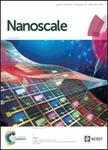版权所有:内蒙古大学图书馆 技术提供:维普资讯• 智图
内蒙古自治区呼和浩特市赛罕区大学西街235号 邮编: 010021

作者机构:Yale Univ Dept Biomed Engn New Haven CT 06520 USA Chonbuk Natl Univ Dept Semicond Sci & Technol Jeonju 561756 South Korea Chung Ang Univ Dept Phys Seoul 156756 South Korea Yale Comprehens Canc Ctr New Haven CT 06520 USA
出 版 物:《NANOSCALE》 (纳米尺度)
年 卷 期:2014年第6卷第12期
页 面:6537-6550页
核心收录:
学科分类:07[理学] 070203[理学-原子与分子物理] 0805[工学-材料科学与工程(可授工学、理学学位)] 0703[理学-化学] 0702[理学-物理学]
基 金:Alzheimer Association New Investigator Grant U.S. National Cancer Institute Howard Temin Pathway to Independence Award (NIH) [4R00 CA136759-02] NIH [U54CA143798] Priority Research Centers Program Basic Science Research Program through the National Research Foundation of Korea (NRF) - Ministry of Education, Science and Technology [NRF-2013R1A12012685]
主 题:Alzheimer Disease/cerebrospinal fluid Alzheimer Disease/immunology Alzheimer Disease/pathology Cells, Cultured Equipment Design Equipment Failure Analysis Flow Cytometry/instrumentation Flow Cytometry/instrumentation Flow Cytometry/methods Flow Cytometry/methods Humans Leukocytes/immunology Leukocytes/pathology Microfluidic Analytical Techniques/instrumentation Nanowires/chemistry Nanowires/ultrastructure
摘 要:Despite the presence of the blood-brain barrier (BBB) that restricts the entry of immune cells and mediators into the central nervous system (CNS), a small number of peripheral leukocytes can traverse the BBB and infiltrate into the CNS. The cerebrospinal fluid (CSF) is one of the major routes through which trafficking leukocytes migrate into the CNS. Therefore, the number of leukocytes and their phenotypic compositions in the CSF may represent important sources to investigate immune-to-brain interactions or diagnose and monitor neurodegenerative diseases. Due to the paucity of trafficking leucocytes in the CSF, a technology capable of efficient isolation, enumeration, and molecular typing of these cells in the clinical settings has not been achieved. In this study, we report on a biofunctionalized silicon nanowire array chip for highly efficient capture and multiplexed phenotyping of rare trafficking leukocytes in small quantities (50 microliters) of clinical CSF specimens collected from neurodegenerative disease patients. The antibody coated 3D nanostructured materials exhibited vastly improved rare cell capture efficiency due to high-affinity binding and enhanced cell-substrate interactions. Moreover, our platform creates multiple cell capture interfaces, each of which can selectively isolate specific leukocyte phenotypes. A comparison with the traditional immunophenotyping using flow cytometry demonstrated that our novel silicon nanowire-based rare cell analysis platform can perform rapid detection and simultaneous molecular characterization of heterogeneous immune cells. Multiplexed molecular typing of rare leukocytes in CSF samples collected from Alzheimer s disease patients revealed the elevation of white blood cell counts and significant alterations in the distribution of major leukocyte phenotypes. Our technology represents a practical tool for potentially diagnosing and monitoring the pathogenesis of neurodegenerative diseases by allowing an effective hema